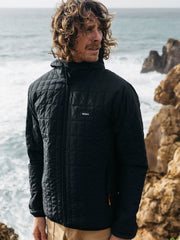Linen
A strong, breathable fabric made from the fibres of the Flax plant, Linen has been produced by humans for millennia.
Linen's natural structure provides excellent moisture-wicking properties, making it ideal for warm weather. The fabric is lightweight, cool to the touch, and dries quickly, offering both comfort and performance for a range of uses. It's also known for its hard-wearing nature and smooth texture, getting softer with each wash and aging beautifully over time.





































































































